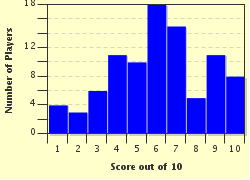Quiz Answer Key and Fun Facts
1. Which of these best describes Alfred Wegener?
2. What is Alfred Wegener best known for?
3. How was Wegener's theory received by the world of science?
4. When was the theory of continental drift finally completely accepted?
5. How and where did Wegener die?
6. What was Wegener studying in Greenland?
7. How many major tectonic plates are there?
8. How are mountains formed?
9. Continents are still on the move. By how much do they move every year?
10. What are Laurasia and Gondwanaland?
Source: Author
russalka
This quiz was reviewed by FunTrivia editor
bloomsby before going online.
Any errors found in FunTrivia content are routinely corrected through our feedback system.

